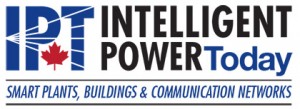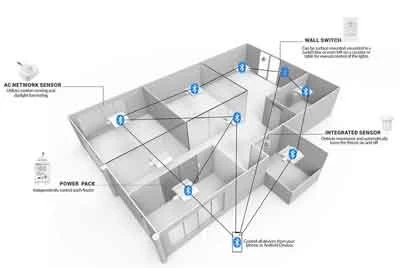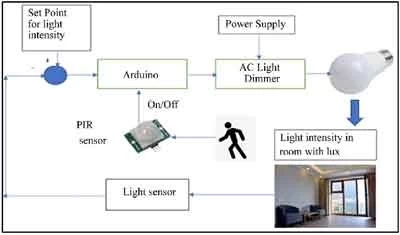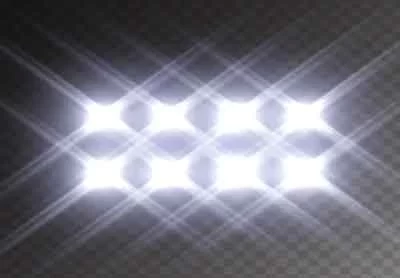Illuminating Decisions: EPRI Lights the Way for Modern Lighting Adoption

Facility managers and operators understand the critical role lighting plays in their daily operations. Accounting for roughly 30% of a commercial building's energy load, lighting significantly impacts energy consumption and associated maintenance costs. However, focusing solely on the initial fixture cost misses a crucial aspect of responsible lighting management – the long-term perspective.
Visit Our Building Automation Study Course
Beyond the Sticker Price: Unveiling the True Cost of Light
Modern lighting solutions promise a brighter future, not just literally, but financially as well. These advancements hinge on two key concepts: energy efficiency (EE) and demand response (DR). EE lighting technologies offer significant energy savings by consuming less power to achieve the same level of illumination. DR programs, on the other hand, provide financial incentives to facilities that reduce their energy consumption during peak demand periods on the grid.
The allure of these benefits is undeniable. However, accurately evaluating their impact on overall lifetime costs can be a daunting task. Operators must weigh the initial investment against the promised energy savings, potential maintenance reductions, and the ever-present need for a reliable and efficient electrical grid.
Enter EPRI: A Legacy of Illuminating Research
This is where the Electric Power Research Institute (EPRI) steps in as a beacon of independent research for facility managers and operators navigating the ever-evolving landscape of modern lighting. For over 15 years, EPRI has established itself as a trusted source, conducting in-depth assessments of these technologies and their real-world performance. Their research goes beyond simply comparing specifications – it delves into the practicalities of lighting operation, maintenance needs, and the potential impact lighting systems can have on power quality and emissions. Building on a strong foundation, EPRI's research program is an ongoing endeavor. In 2013, their efforts focused on a comprehensive evaluation of seven advanced lighting products:
- Low-cost screw-based LED lamps
- Retrofit LED ceiling fixtures
- Suspended LED fixtures
- LED-based 2x4 troffers
- LED high bay fixtures
- Innovative LED screw-based lamps
- LED hospitality lighting
These assessments provided valuable insights into the diverse performance characteristics of these emerging technologies. EPRI's research methodology ensures a holistic evaluation, examining not only energy consumption and efficiency but also:
Ability to work with various controls: Compatibility with dimming and other control systems is crucial for optimizing energy use and creating dynamic lighting environments.
- Color output: Ensuring appropriate color rendering is essential for various applications, impacting occupant comfort and visual tasks.
- Emissions profile: Evaluating potential environmental concerns associated with the lighting system, including light pollution and harmful emissions.
- Immunity to power quality events: Assessing how lighting systems respond to fluctuations and disturbances on the grid, ensuring reliable operation.
- Feature sets delivered: Identifying the unique functionalities offered by different lighting products.
Delving Deeper: Understanding Performance Variations
EPRI's research goes a step further, acknowledging that real-world performance can deviate from idealized settings. Their assessments consider how various factors can influence a lighting system's performance:
- Voltage Fluctuations: Products are evaluated at 10% above and below their rated voltage to understand their behavior under real-world power conditions, where voltage variations are common.
- Dimming Impact: The report addresses the potential for dimming to affect a light source's efficacy (lumens per watt) and power factor, ensuring informed decisions regarding dimmable lighting controls.
- This comprehensive approach empowers informed decision-making, allowing facility managers and operators to select lighting solutions that optimize not just energy savings, but also operational performance and grid stability.
Challenges and Objectives: Addressing Stakeholder Needs
EPRI's research caters to a diverse audience, addressing the needs of individuals involved in various aspects of facility management and utility operations:
- Energy Efficiency and Demand Response Professionals: Understanding how energy consumption, efficiency, and lighting performance vary with different conditions is crucial for designing effective programs.
- Utility Personnel: EPRI's research helps utilities assess the potential impact of widespread adoption of advanced lighting technologies on the grid, ensuring a smooth transition to a more sustainable future.
- Energy Management and Demand Response Specialists: The report provides valuable insights for optimizing energy use and participating in demand-response programs effectively.
Applications, Values, and Use: A Brighter Future for All
The future belongs to advanced lighting technologies poised to play a vital role in utility programs promoting:
- Grid Load Reduction: Efficient lighting systems significantly reduce peak demand on the grid, contributing to a more stable and sustainable energy infrastructure.
- Demand Response Optimization: Advanced lighting systems with dimming capabilities and compatibility with control systems are crucial for participating in demand-response programs.
- High-Efficiency Illumination: Modern lighting technologies deliver exceptional efficiency levels, leading to substantial energy savings for facilities of all types.
EPRI: A Partner in Progress
EPRI's commitment to lighting research extends beyond one-off assessments. They recognize the dynamic nature of the lighting technology landscape and continuously re-evaluate promising technologies. This ensures that facility managers and operators have access to the most up-to-date information when making lighting upgrade decisions.
Navigating the Path to a Brighter Future
EPRI's independent research offers a powerful tool for facility managers and operators to navigate the complexities of modern lighting. By shifting the focus beyond initial cost and towards a holistic view of energy and maintenance needs, along with the benefits of EE and DR, operators can make strategic investments. These investments not only lead to optimized long-term savings but also contribute to a more sustainable future for both buildings and the environment. With EPRI as a trusted guide, illuminating the path to responsible lighting choices becomes a clear and achievable goal.






